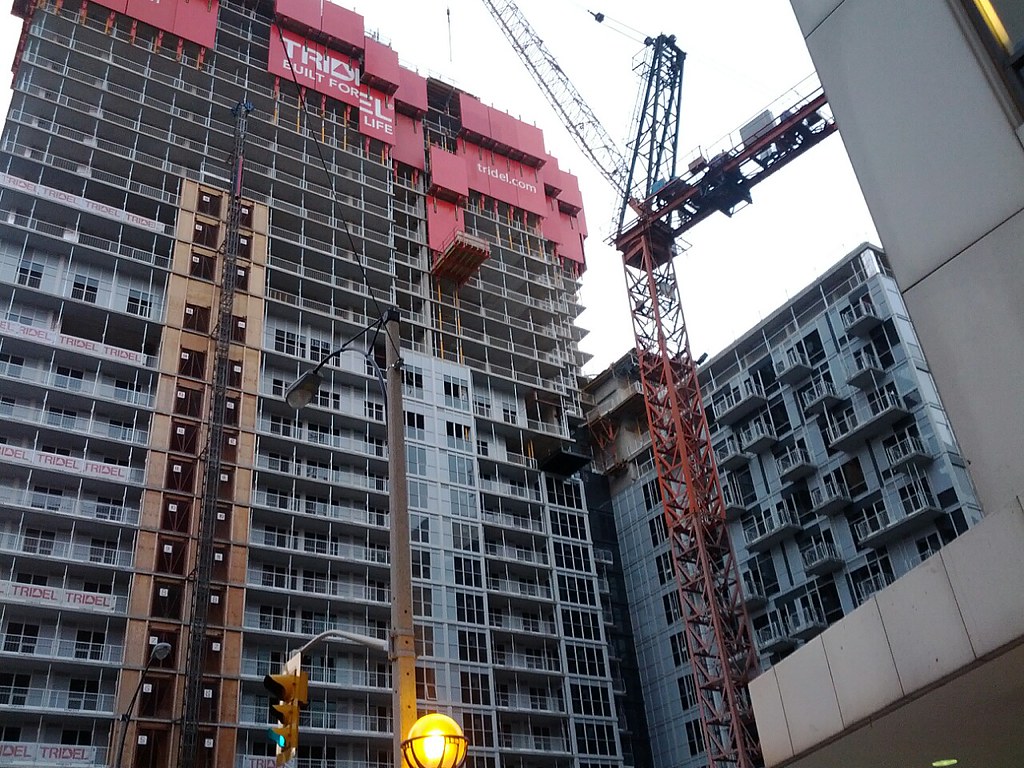Reviewing the comments about our use of spandrel in some of our buildings, our project managers and architects would like to clear up some misconceptions that Interchange42 already alluded to in an earlier post.
1. Spandrel is considered a premium finishing material that adds to the cost of the building in two ways: spandrel ranges in price from expensive to very expensive (double layer with film in between) and there are certainly more inexpensive materials or designs/processes that can be utilized to bring down construction costs. Aside from material costs, you have increased labour costs for installation.
2. Tridel and Deltera have the largest number of building projects underway in Canada with a commitment to achieving LEED certification. The use of spandrel allows us to achieve a higher LEED rating because we can insulate behind the spandrel. Architecturally, the sleek glass look can be maintained.
If you consider the increased cost of the material, labour and LEED accreditation, spandrel leads to a better high performance building and should not be construed as a sign of a 'cheap', poorly designed or constructed building or an expedient way to cut corners as this is completely false. Our use of spandrel is intended to provide our purchasers with a superior condominium home.
In the construction of our buildings, a large number of our own design build team and Toronto's top professionals collaborate on bringing the best building they can to the market. Beyond aesthetics, a great deal of attention is given to the suite layouts for efficiency and making the best use of living spaces; amenities and common areas are planned and designed with rigourous attention to detail, with interior design by award winning designers; building performance is carefully computer modelled and audited on completion; and we provide the best customer care and condominium property management.
